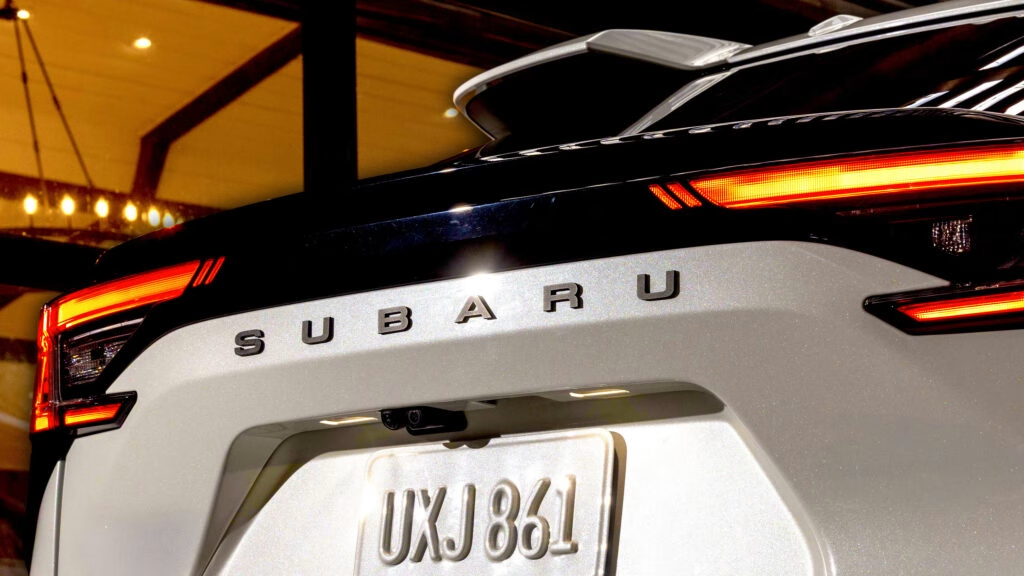Subaru is at a crossroads, and it’s not just about which direction to take next. The automaker is currently reassessing its electrification strategy, a move that reflects the broader uncertainties facing the auto industry today. With fluctuating U.S. tariffs and the unpredictable landscape of EV tax credits, Subaru’s future in the electric vehicle (EV) market is more ambiguous than ever.
What’s Going On with Subaru’s EV Plans?
If you’ve been following Subaru, you might have noticed that the brand has been somewhat late to the EV party. Currently, the only electric vehicle listed on Subaru’s U.S. website is the recently updated Solterra. While there’s buzz around the upcoming Trailseeker, which is set to debut in 2026, Subaru’s overall EV lineup remains sparse. This lack of offerings raises questions about the brand’s commitment to electrification and whether it can catch up with competitors who are racing ahead.
The company’s recent admission of “re-evaluating” its electrification strategy is a clear sign of the challenges it faces. The uncertainty surrounding U.S. tariffs and EV tax credits is a significant factor. With the potential for tariffs to cost Subaru an estimated $2.5 billion this year, the stakes are high. Although Subaru has a manufacturing plant in Indiana, it only produces about half of the vehicles sold in the U.S., meaning the rest are imported and subject to these tariffs.
Why Are Tariffs and Tax Credits a Big Deal?
The current landscape for EVs is fraught with uncertainty. Automakers are grappling with the implications of tariffs and the future of EV tax credits, which can significantly impact pricing and consumer adoption. For Subaru, the unpredictability of these factors complicates its ability to plan effectively for the future. With the possibility of tax credits being altered or eliminated, consumers may hesitate to invest in EVs, further slowing the market’s growth.
Subaru’s situation is not unique; many automakers are feeling the pressure. The industry is in a state of flux, and without a clear path forward, companies like Subaru may struggle to maintain their market share. The question remains: how will Subaru adapt to these challenges?
Shifting Production Strategies
As Subaru navigates these turbulent waters, it’s also reconsidering its production strategies. The company had initially planned to establish a new EV-only plant, but that vision is now under review. There’s a growing likelihood that this facility will need to accommodate not just electric vehicles but also hybrids and traditional combustion vehicles. This pivot reflects a pragmatic approach to the current market conditions, but it also raises concerns about Subaru’s long-term commitment to electrification.
The Trailseeker, which is expected to be built overseas, is a prime example of this shift. Production may take place north of Tokyo, indicating that Subaru is looking beyond its U.S. operations to meet demand. However, this decision could also mean longer wait times for consumers and potential complications in logistics.
What Does This Mean for Subaru’s Future?
Subaru’s recent fiscal report revealed a 13% dip in operating profit and a 4.1% decline in global sales. While sales in Japan saw a slight increase, the overall trend suggests that the brand is facing significant headwinds. As the automotive landscape evolves, Subaru must find innovative ways to adapt and thrive.
The big takeaway? Subaru’s journey into the EV market isn’t just about launching new models; it’s about navigating a complex web of economic and regulatory challenges. The company’s ability to pivot and respond to these uncertainties will be crucial in determining its future success. So, if you’re a Subaru enthusiast or just curious about the future of electric vehicles, keep an eye on how this story unfolds. It’s bound to be an interesting ride.

